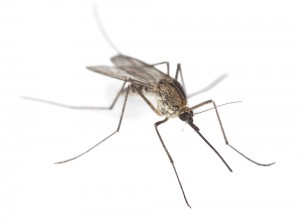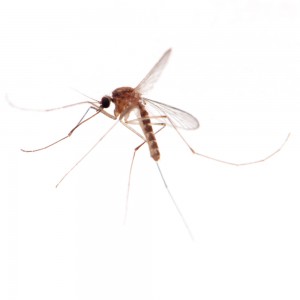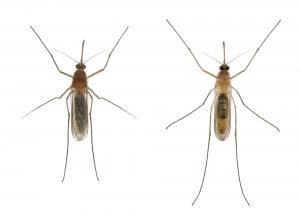There are about 1.8 million species of insects on the planet of differing sizes and behaviour. Insects have varying types of interactions with humans.
Some are beautiful like butterflies and some are deadly like scorpions. Some are really sweet like bees, which are one of most important species to humans as they not only provide honey but aid in pollinating the crops of fruit trees.
However, they all share an important trait…they are smart creatures.
You know what they say, “keep your friends close and your enemies closer”!
This definitely does not mean we should keep harmful insects and mosquitoes close and not avoid them, but it means we should know about our enemies to develop the best way to conquer them.
A smart traveler should have a minimum basic knowledge of mosquitoes, ticks, spiders, and other insects to prevent them from inflicting harm.
*Please note we no longer carry the Encephalitis vaccine.
Here are some of the important insects that travelers should be aware of:

Aedes Mosquitoes
Does size matter?
These tiny mosquitoes are notoriously scary as they, especially Aedes Aegypti and Aedes Albopictus as they transmit not only one but many serious viral infections namely yellow fever, dengue fever, chikungunya and west nile virus .
To produce and lay eggs the Aedes female needs to suck blood. Although they bite animals like monkeys, Aedes love human blood. The intention of Aedes is to reproduce but looking for blood meals is the source of the problem. They transmit the virus from an infected human or monkey to another human.
Travellers will notice that Aedes Aegypti and Aedes Albopictus have three pair of legs with white on the legs. These mosquitoes are aggressive and bite immediately after landing on skin, whether indoors or outdoors. The head has 3 pointy parts: the central hairless blood sucking part (proboscis), on either side of which 2 hairy antennas lay. When they land, one pair of the legs will stick up in the air.
Knowledge of where Aedes mosquitoes lay their eggs is of vast importance. If they are deprived of their breeding grounds they can not reproduce and the disease cycle will be interrupted. They usually lay eggs wherever they can find stagnant water like flower pots and discarded tires which means Aedes are roaming around almost everywhere, rural and urban, jungle or city.
It is equally important to know when they do bite to be best prepared. The twilight of the day (dusk and dawn) is when they mostly bite humans, however, they can bite at anytime of the day.
Along with employing the general tips in our Mosquito Safety section, avoiding where Aedes mosquitoes hang around, especially during dusk and dawn, are good protective measures.
Aedes Mosquitoes Summary for the Traveller
Biting behavior
daytime(dawn to dusk), indoors and outdoors, urban and rural. Aggressive.
Distinguishing features
3 pairs of white-striped, black legs, a sucking part and 2 hairy antennas on the head. 2 wings.
Diseases transmitted
Dengue, yellow fever, chikungunya and others
Prevention
See: Mosquito Safety
*Please note we no longer carry the Encephalitis vaccine.

Anopheles Mosquitoes
These night biters are very famous, but not for something good. Anopheles mosquitoes transmit malaria to about a quarter billion people every year and breed in stagnant fresh water in extensive parts of Africa, Asia and South America. Consequently, knowledge of Anopheles mosquitoes is very important to travellers.
Although it’s needless to say, the measures outlined in the Mosquitoes Safety section should be employed by all travellers, at any destination. Insecticide-treated bed nets play a major role in preventing Anopheles bites and therefore actively preventing malaria. The reason behind this is their biting behaviour. Adult female Anopheles mosquitoes rest during the day and bite during the night when the traveller is asleep.
Anopheles mosquitoes have a dark brown body, 3 pairs of legs and a pair of wings (of course!). They have a distinguishable head, which has a central sucking part, 2 hairy antennas and 2 extra non-hairy structures between the sucking part and the antenna.
For maximum skin penetration the Anopheles female will assume a position perpendicular to skin. Using 2 pairs of their legs to position the head (which has the sucking part) upside down against the skin and the 3rd pair of legs away from the skin.
Anopheles Mosquitoes Summary for the Traveller
Biting behavior
Night biters during sleep, bite indoors and outdoors, urban and rural.
Distinguishing features
3 pairs of dark legs, head that has a sucking part, 2 pointy hairless structures, 2 hairy antennas and 2 wings.
Diseases transmitted
Malaria
Prevention
See: Mosquito Safety
*Please note we no longer carry the Encephalitis vaccine.

Culex Mosquitoes
These mosquitoes transmit Japanese Encephalitis , a serious and viral brain infection, mainly in South East Asia.
They have small bodies and usually transmit the diseases to humans from birds and pigs in rural areas.
They are usually night biters.
*Please note we no longer carry the Encephalitis vaccine.
Cules Mosquitoes Summary for the Traveller
Biting behavior
Night biters usually, in rural areas.
Distinguishing features
Small body, 2 wings and 3 pairs of legs. Head has a central sucking part and 2 hairy antennas.
Diseases transmitted
Japanese Encephalitis, etc.
Prevention
See: Mosquito Safety
*Please note we no longer carry the Encephalitis vaccine.
Ticks
There are different types of ticks causing different diseases, however, ticks look similar with variable sizes ranging form 2-10 mm.
They have oval bodies and 8 legs which all look attached very close to the head.
Ticks don’t fly but they wait on long grass or vegetation, to land on human hosts, usually by spreading out and waving their legs. Pretty much like hitchhiking! After they land on skin they start sucking blood and transmit diseases mostly Rickettsia (a type of bacteria).
Lyme disease is a famous example, but is not necessarily associated with travel (endemic in North America).
The most important travel related illness caused by ticks is the African tick-bite fever or tick typhus, which causes fever and an eschar (black scab) at the site of the tick bite.
Across Russia and Europe, tick-borne encephalitis is also present. There is a vaccine available for tick-borne encephalitis.
Mosquito repellents like DEET and Permethrin also work on ticks. For more information about tick bite prevention, please see our Mosquito Safety section.
*Please note we no longer carry the Encephalitis vaccine.


Flies
Sand flies have a hairy light brown body, hairy wings held in a V-shaped position and 3 pairs of legs.
Phlebotomus sandflies cause a disease called Leishmaniasis in many parts of the world especially South America, Africa and the Middle East.
The disease causes disfiguring skin lesions.
Sandflies cannot bite from behind clothing.
Black flies, as the name implies, have a black hunchbacked body with wide wings and 3 pairs of legs. They cause a disease called river blindness or onchocerciasis The reason behind the name “river blindness” is because black flies breed in fast flowing rivers and they transmit (through a bite) an onchocerciasis which causes blindness.
Tsetse flies are large flies with 3 pairs of legs and 2 wings. They bite during the daytime, transmitting a protozoan disease called African trypanosomiasis or African sleeping sickness in rural sub-Saharan Africa.
Deer flies or Chrysops are annoying large flies with a painful bite. In certain parts of Africa, they transmit a filarial parasite called Loa Loa resulting in a serious disease called Loaisis.
Human botflies and Tumbu fly larvae can invade human tissues after they hatch from eggs laid on clothing hung outdoors to dry.
Ironing clothing and bed linens before use should be implemented when in Africa.
To avoid fly bites, all measures in our Mosquito Safety section should be implemented.

Fleas
Tunga penetrans or sand fleas can penetrate the skin, lodge themselves underneath and start producing eggs, causing painful skin lesions called tungaisis.
The lesion is usually on the feet or toes.
Other names of these sand fleas include Jigger fleas or Chigoe fleas and they are present in Asia, Africa and South America.
For preventive measures see our Mosquito Safety section.
